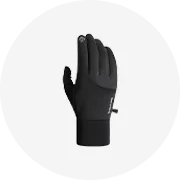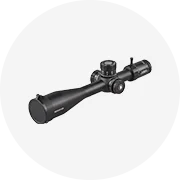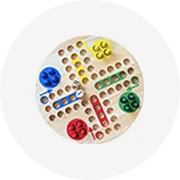Phổ biến trong ngành của bạn

Nhãn Dán Chống Thấm Nước Tùy Chỉnh Nhãn Dán Vinyl In Kỹ Thuật Số Cho Lọ Mật Ong, Nhãn Dán Nhãn Lọ Mật Ong Riêng
0,02 US$ - 0,13 US$
Đơn hàng tối thiểu: 1000 Cái


Tùy Chỉnh Riêng Thương Hiệu Logo Dệt Nhãn T-Shirt Phía Dưới Bên Tay Áo Nhãn Cổ Tag Nhãn
0,01 US$ - 0,08 US$
Đơn hàng tối thiểu: 100 Cái


Giấy Chất Liệu Dính Chắc Tùy Chỉnh Kích Thước 1080/1224/1525Mm CuộN Jumbo Cuộn Giấy Tráng Tự Dính Bán Bóng
0,05 US$ - 0,06 US$
Đơn hàng tối thiểu: 50000 Mét vuông


Thẻ Treo Dập Nổi Thẻ Giá Màu Thẻ Giấy Treo Thẻ Tên Thương Hiệu Nhãn Tùy Chỉnh Cho Thương Hiệu Quần Áo
0,01 US$ - 0,06 US$
Đơn hàng tối thiểu: 100 Cái


Nhãn Nhiệt Sinh Thái Cuộn Jumbo 72G Nhãn Giá Nóng Chảy Chất Lượng Cuộn Tự Dính Bán Bóng Cuộn Nhãn Giấy Tráng
0,22 US$ - 0,23 US$
Đơn hàng tối thiểu: 10000 Mét vuông


Sang Trọng Cotton/Dệt Nhãn Cho Ăn Mặc Tùy Chỉnh Handmade Thẻ May Mặc Logo T Áo Sơ Mi Boutique May Giá Rẻ Vải Satin Quần Áo Nhãn
0,05 US$ - 0,30 US$
Đơn hàng tối thiểu: 50 Cái
Vận chuyển mỗi chiếc: 0,38 US$

Quần Áo bóc tự dính biểu tượng tùy chỉnh tên dính vải Nhãn dán nhãn cho giày sofa đồ nội thất may handmade mặt hàng
Sẵn sàng vận chuyển
0,01 US$ - 0,19 US$
Đơn hàng tối thiểu: 200 Cái
Vận chuyển mỗi chiếc: 0,04 US$

Handmade Quần Vá Da Thiết Kế Nhãn May Mặc Màu Jeans Kraft Nhãn Giấy
0,09 US$ - 0,21 US$
Đơn hàng tối thiểu: 100 Cái

Fantastic Sinh Thái Thân Thiện Cá Nhân Thẻ May Mặc Tùy Chỉnh Dệt Tên Thương Hiệu Handmade Dệt Damask Nhãn Cho Quần Áo
Sẵn sàng vận chuyển
0,05 US$ - 0,07 US$
Đơn hàng tối thiểu: 1000 Cái
Vận chuyển mỗi chiếc: 0,05 US$

Tùy Chỉnh Dệt Kim Beret Nhãn Handmade Item Tags Da Lộn Da Đinh Tán Tag Dài Gầy Thẻ Crochet Beanie Da Nhãn
0,05 US$ - 0,15 US$
Đơn hàng tối thiểu: 200 Cái
Vận chuyển mỗi chiếc: 5,29 US$

Nhà Máy Tùy Chỉnh Handmade Quần Áo Nhãn Hiệu Cổ Nhãn Dệt Chính Nhãn Hàng May Mặc
0,01 US$ - 0,08 US$
Đơn hàng tối thiểu: 100 Cái

Nhãn Dệt Thủ Công Cho Nhãn Chăm Sóc Quần Áo Logo Cá Nhân Thẻ May Mặc Có Thể Giặt Được Phụ Kiện May Vá
0,07 US$ - 0,42 US$
Đơn hàng tối thiểu: 100 Cái

Tùy Chỉnh Đồ Bơi Kim Loại Letters Logo Quần Áo Khắc Kim Loại Handmade Tag Nhãn
0,13 US$ - 0,68 US$
Đơn hàng tối thiểu: 100 Cái
Vận chuyển mỗi chiếc: 2,14 US$

Handmade Dập Nổi Cao Su Trong Suốt Nhãn Bên Cho Túi Xách, Không Thấm Nước Bên Cao Su Nhãn Cho Đồ Bơi
0,06 US$ - 0,10 US$
Đơn hàng tối thiểu: 100 Cái

Máy Nhãn Tùy Chỉnh Flat Irons Nhãn Dệt Riêng Cho Các Mặt Hàng Thủ Công
0,01 US$ - 0,05 US$
Đơn hàng tối thiểu: 200 Cái

Vòng Tròn 1.2 Inch Handmade Clear Nhãn Dán Nhãn Dán Trong Suốt-204 Nhãn, Xóa (1.2 Inch)
Sẵn sàng vận chuyển
1,60 US$ - 2,40 US$
Đơn hàng tối thiểu: 100 Gói
Vận chuyển mỗi chiếc: 3,03 US$

Handmade các bản vá lỗi Maker tùy chỉnh in ấn tên giả da denim nhãn với kim loại dập logo
0,43 US$ - 0,85 US$
Đơn hàng tối thiểu: 500 Cái
Vận chuyển mỗi chiếc: 0,11 US$

Dính Con Dấu Sticker Cho Baking Handmade Sản Phẩm Sinh Viên DIY Làm Việc Sticker Nhãn Cho Deco
0,01 US$ - 0,09 US$
Đơn hàng tối thiểu: 1000 Đơn vị

Hàng May Mặc Tùy Chỉnh Tags Logo Thiết Kế Miễn Phí Handmade Kẽm Hợp Kim Kim Loại Nhãn Cho Quần Áo
0,08 US$ - 0,40 US$
Đơn hàng tối thiểu: 100 Cái
Vận chuyển mỗi chiếc: 2,58 US$

Nhãn Làm Bằng Tay Cho Quần Áo Thẻ Da PU Nhãn Thủ Công DIY
0,02 US$ - 0,06 US$
Đơn hàng tối thiểu: 50 Cái

Hybsk 1.5 "Tùy Chỉnh In Dính Giấy Bóng Nhãn Handmade Với Tình Yêu Stickers Tổng Số 500 Nhãn Mỗi Cuộn
Sẵn sàng vận chuyển
1,90 US$ - 2,80 US$
Đơn hàng tối thiểu: 10 Cuộn
Vận chuyển mỗi chiếc: 1,49 US$

Nhãn Quần Áo Màu Be Hỗn Hợp, Nhãn Dệt Cotton In Bằng Tay Cho Phụ Kiện May
0,02 US$ - 0,09 US$
Đơn hàng tối thiểu: 100 Cái

Tùy Chỉnh Thương Hiệu Mới Giả PU Da Thẻ Nếu Khắc Gấp Quần Áo Handmade Logo Da Nhãn Cho Quần Áo Quần Áo Hàng Dệt Kim

0,05 US$ - 0,15 US$
Đơn hàng tối thiểu: 50 Cái

Bánh Nhãn Dán Nhãn Baking Bag Bao Bì Bánh Hộp Con Dấu Nhãn Dán Thủ Công Thẻ Nhãn Cá Nhân Dán Nhãn
0,01 US$ - 0,09 US$
Đơn hàng tối thiểu: 500 Cái
Vận chuyển mỗi chiếc: 0,06 US$

Thẻ Nhãn Trang Phục Đóng Gói Thủ Công Tùy Chỉnh Thẻ Giấy Tráng Tay Quần Áo Nhãn Quần Áo Tùy Chỉnh Sang Trọng Và Thẻ Treo
0,07 US$ - 0,19 US$
Đơn hàng tối thiểu: 1000 Cái
Vận chuyển mỗi chiếc: 1,79 US$

Thẻ may thủ công cá nhân nhãn tùy chỉnh cho móc thẻ da thuần chay thẻ da lộn giả
0,01 US$
Đơn hàng tối thiểu: 2 Cái
Vận chuyển mỗi chiếc: 3,57 US$

Nhãn Thủ Công Cho Quần Áo Thẻ Làm Bằng Tay Phiên Bản Giới Hạn Nhãn Da Sợi Phụ Kiện May Túi Mũ Tự Làm 54*15MM
0,04 US$ - 0,07 US$
Đơn hàng tối thiểu: 100 Cái

Chết Cắt Dán Tùy Chỉnh Handmade Với Tình Yêu Cho Quà Tặng Phong Bì Túi Hộp Dính Sticker Tag Label
Sẵn sàng vận chuyển
0,24 US$
Đơn hàng tối thiểu: 1 Cuộn
Vận chuyển mỗi chiếc: 4,14 US$

Nhãn Và Hộp Steroid Nhãn Hiệu Thủ Công Chất Lượng Cao/Dịch Vụ Đóng Gói Và Dán Nhãn Tùy Chỉnh
0,05 US$ - 0,15 US$
Đơn hàng tối thiểu: 500 Cái

Sản Xuất Tại Ý Pháp Nga Dệt Quần Áo Nhãn Handmade Tags Đen Trắng Bông Nhãn Chính Cho Mũ Túi Trang Trí
0,01 US$ - 0,03 US$
Đơn hàng tối thiểu: 1000 Cái

Tùy Chỉnh In Ấn Holographic Vodka Thực Phẩm Riêng Mã Vạch Nhãn Dính Nhãn Cho Handmade XÀ PHÒNG NHÔM Logo Tên Sticker Label
Sẵn sàng vận chuyển
0,04 US$ - 0,20 US$
Đơn hàng tối thiểu: 100 Cái
Vận chuyển mỗi chiếc: 0,06 US$

Nhà Máy Việt Nam Miễn Phí Nhập Khẩu Vải Handmade Tags Thẻ Đầy Màu Sắc Nhãn Hàng May Mặc Cho Túi Vải Hat Thủ Công Phụ Kiện May
0,01 US$ - 0,10 US$
Đơn hàng tối thiểu: 1000 Cái

Handmade PU Leather Tags Trên Quần Áo Hàng May Mặc Nhãn Dập Nổi Cho Túi Jeans Giày Giày Trang Phục Phụ Kiện May Mặc
0,05 US$ - 0,50 US$
Đơn hàng tối thiểu: 200 Cái

Quần Áo bóc tự dính biểu tượng tùy chỉnh tên dính vải Nhãn dán nhãn cho giày sofa đồ nội thất may handmade mặt hàng

0,01 US$ - 0,09 US$
Đơn hàng tối thiểu: 100 Cái
Vận chuyển mỗi chiếc: 0,08 US$

Nhãn Da Lộn Màu Thủ Công Với Thẻ Tình Yêu Cho Mũ Nhãn Thủ Công Dệt Kim Cho Quần Áo Phụ Kiện May Mặc 1 "X 2" 20 Cái
0,08 US$ - 0,65 US$
Đơn hàng tối thiểu: 100 Cái
Vận chuyển mỗi chiếc: 0,33 US$

Dụng Cụ Làm Logo Tấm Quần Áo Nhãn Chính Logo Khách Hàng Nhãn Quần Áo Thủ Công Nhãn May Mặc Hợp Kim Kẽm Kim Loại Màu Vàng Tùy Chỉnh
0,10 US$ - 0,15 US$
Đơn hàng tối thiểu: 500 Cái
Vận chuyển mỗi chiếc: 1,88 US$

Tùy Chỉnh Quảng Trường Dệt May Phụ Kiện Cá Nhân Quần Jean Vải PU Bất Logo Bò Ẩn Handmade Genuine Leather Label
0,36 US$ - 0,966 US$
Đơn hàng tối thiểu: 100 Cái

Phổ Biến Fancy Thông Minh Tùy Chỉnh Quần Áo Tùy Chỉnh Handmade Sticker Nhãn
0,25 US$ - 0,36 US$
Đơn hàng tối thiểu: 1000 Cái

Nhãn dán thủ công nướng với nhãn dán tình yêu Cảm ơn bạn đã đặt hàng của bạn nhãn dán niêm phong trắng
Sẵn sàng vận chuyển
0,27 US$ - 0,39 US$
Đơn hàng tối thiểu: 10 Cuộn
Vận chuyển mỗi chiếc: 1,81 US$

Plantable handmade New tùy chỉnh hạt giống thẻ giấy và thẻ thân thiện với môi thẻ giấy & nhãn
0,17 US$ - 0,23 US$
Đơn hàng tối thiểu: 1000 Cái
Vận chuyển mỗi chiếc: 1,19 US$
Các danh mục hàng đầu
Giới thiệu về nhãn thủ công
Cho dù đó là để vận chuyển, lưu trữ hay một phần của quá trình sản xuất, bạn cần đảm bảo rằng bạn có quyền. nhãn thủ công. Với sự lựa chọn phong phú, Alibaba.com có các lựa chọn với đủ hình dạng, kích cỡ và chất liệu. Bạn có thể tìm thấy những cái được thiết kế cho dầu và hóa chất. Cũng có những loại được xử lý đặc biệt để xử lý thực phẩm. Vì có rất nhiều ứng dụng, bạn có rất nhiều. Lựa chọn nhãn thủ công để đáp ứng nhu cầu của bạn.
Phổ biến nhất. Kích thước nhãn thủ công có sẵn được gọi là trống 55 gallon. Chúng thường có màu xanh lam và rất hữu ích để lưu trữ hóa chất. Điều thú vị là không phải tất cả các trống 55 gallon đều giống nhau. Tại Alibaba.com, bạn có thể tìm thấy một số chiếc được làm bằng thép, trong khi những chiếc khác được làm từ nhựa. Tất cả đều chất lượng cao nhưng đáp ứng các thông số kỹ thuật khác nhau.
Không phải ai cũng cần một cái trống 55 gallon. Đó là lý do tại sao bạn sẽ tìm thấy một điều tuyệt vời. Lựa chọn nhãn thủ công có sẵn ở các kích thước khác nhau. Nhiều nhà cung cấp cung cấp trống với kích thước nhỏ hơn. Chúng có thể nhỏ đến 18 lít. Các kích thước đa dạng này là hợp thời trang để phân phối các sản phẩm sơn. Bạn cũng có thể in sẵn chúng và có thể là kim loại hoặc nhựa.
Nếu bạn đang tìm kiếm quyền. nhãn thủ công, thì Alibaba.com là nơi để mua sắm. Các tùy chọn có sẵn cho phép bạn chọn kích thước bạn cần, chất liệu bạn muốn và số lượng của bạn. Bất kể ứng dụng là gì, bạn có thể tìm thấy thứ phù hợp với nhu cầu của mình.
Phổ biến nhất. Kích thước nhãn thủ công có sẵn được gọi là trống 55 gallon. Chúng thường có màu xanh lam và rất hữu ích để lưu trữ hóa chất. Điều thú vị là không phải tất cả các trống 55 gallon đều giống nhau. Tại Alibaba.com, bạn có thể tìm thấy một số chiếc được làm bằng thép, trong khi những chiếc khác được làm từ nhựa. Tất cả đều chất lượng cao nhưng đáp ứng các thông số kỹ thuật khác nhau.
Không phải ai cũng cần một cái trống 55 gallon. Đó là lý do tại sao bạn sẽ tìm thấy một điều tuyệt vời. Lựa chọn nhãn thủ công có sẵn ở các kích thước khác nhau. Nhiều nhà cung cấp cung cấp trống với kích thước nhỏ hơn. Chúng có thể nhỏ đến 18 lít. Các kích thước đa dạng này là hợp thời trang để phân phối các sản phẩm sơn. Bạn cũng có thể in sẵn chúng và có thể là kim loại hoặc nhựa.
Nếu bạn đang tìm kiếm quyền. nhãn thủ công, thì Alibaba.com là nơi để mua sắm. Các tùy chọn có sẵn cho phép bạn chọn kích thước bạn cần, chất liệu bạn muốn và số lượng của bạn. Bất kể ứng dụng là gì, bạn có thể tìm thấy thứ phù hợp với nhu cầu của mình.






















